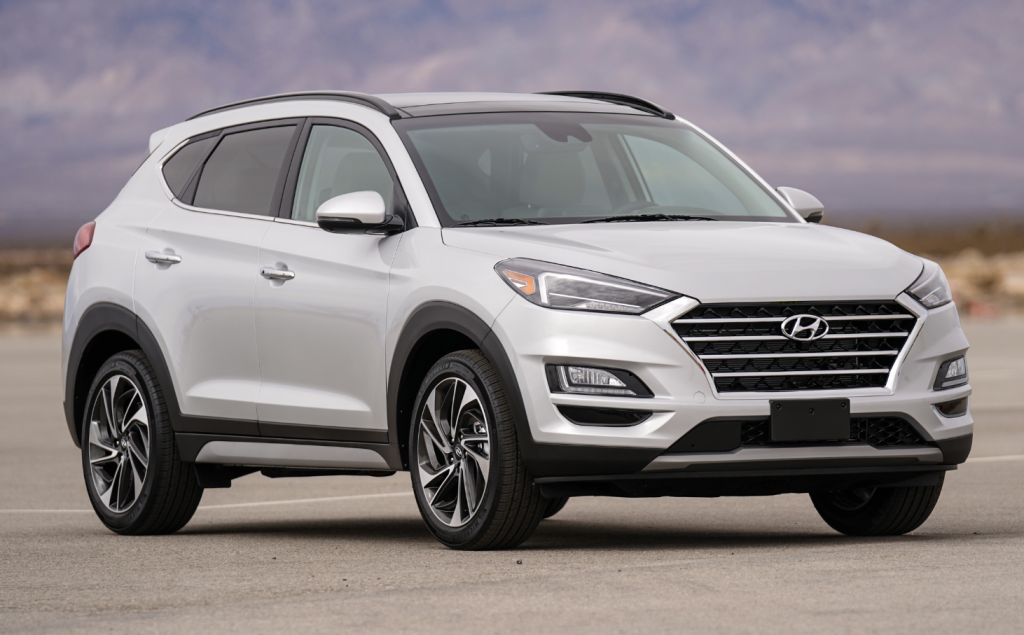
 Hyundai unveiled a freshened version of its compact SUV at the 2018 New York Auto Show. The 2019 Hyundai Tucson gets a comprehensive mid-cycle refresh that nets it an exterior facelift, an updated interior, several new features, and a 2.4-liter available engine in place of the previous turbocharged 1.6-liter.
Hyundai unveiled a freshened version of its compact SUV at the 2018 New York Auto Show. The 2019 Hyundai Tucson gets a comprehensive mid-cycle refresh that nets it an exterior facelift, an updated interior, several new features, and a 2.4-liter available engine in place of the previous turbocharged 1.6-liter.
Test Drive: 2017 Hyundai Tucson
The standard-equipment list has been expanded, and now includes Apple CarPlay/Android Auto functionality, Forward Collision-Avoidance Assist and Lane Keeping Assist, and a new electronic parking brake. Available features now include automatic high-beam headlights, rain-sensing wipers, a second-row USB charger, and Qi wireless device charging. A 360-degree surround-view monitor, adaptive cruise control with stop and go functionality, and a driver attention warning feature join the list of available safety equipment.
The 175-horsepower turbocharged 1.6-liter 4-cylinder, which was previously the Tucson’s “step-up” engine choice, has been discontinued. Taking its place is a 181-hp 2.4-liter 4-cylinder, which is standard in SEL, Sport, and Limited trim levels. The Value and SE models carry on with a 164-hp 2.0-liter four. Both the 2.0 and 2.4 engines are paired with a conventional 6-speed automatic transmission; the previous turbo 1.6 used a 7-speed automated-manual transmission.

The exterior design updates bring the Tucson more in line with Hyundai’s latest design themes. A new front fascia includes Hyundai’s signature cascading grille, and there are also new-design headlights and taillights, redesigned wheels, and a new rear fascia. The interior is freshened via a revamped dashboard layout (with new center stack, instrument cluster, and panel vent designs), new rearview mirror, and new leather seat design.
The 2019 Hyundai Tucson is slated to arrive in dealerships this fall.
CG Says:
No big surprises here—just an on-the-mark “sweetening” of one of the many likable entrants in the super-popular compact SUV category. The current-generation Hyundai Tucson debuted as a 2016 model; this refresh adds a number of desirable standard and available features that help keep the Tucson a compelling choice in its class. We also applaud the switch to the 2.4-liter engine and conventional automatic transmission; the previous turbo 1.6 powertrain was reasonably peppy, but its 7-speed automated-manual transmission suffered from awkward, non-linear power delivery in low-speed driving.



